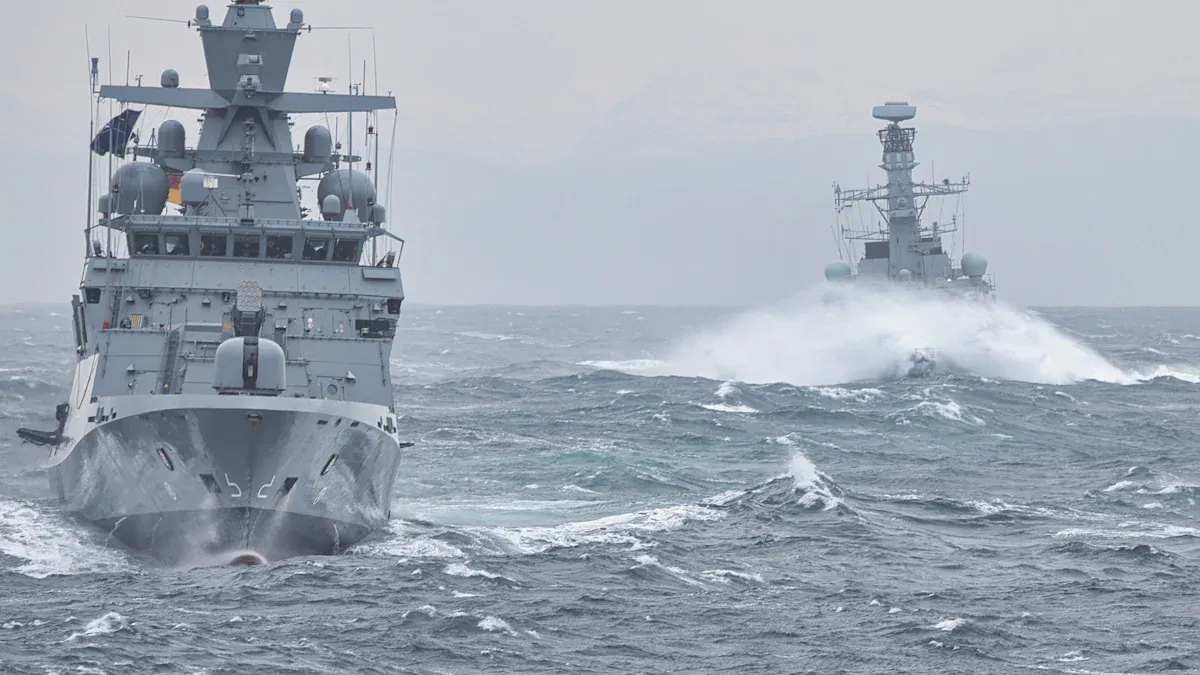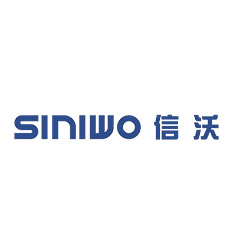
Communication at sea has always been a challenge. You rely on a marine industrial telephone to maintain clear and reliable contact, even in the harshest environments. In 2025, advancements like the ATEX industrial telephone and waterproof industrial telephone are revolutionizing marine communication. These innovations meet the growing demand for secure, sustainable, and efficient solutions in maritime operations.
Key Takeaways
- Smart features in marine phones cut noise and translate languages. This makes talking safer and teamwork easier.
- IoT lets marine phones link to other devices. It gives live updates on ship data to keep you aware and in charge.
- New designs and eSIM tech in marine phones save energy. They are eco-friendly and great for green ship operations.
Cutting-Edge Technologies in Marine Industrial Telephones

AI-Driven Communication Enhancements
Artificial Intelligence (AI) is transforming how you communicate at sea. AI-powered systems in marine industrial telephones now analyze voice patterns to reduce background noise. This ensures clear conversations, even in noisy environments like engine rooms or during storms.
AI also enables predictive maintenance. Your telephone can now monitor its own performance and alert you to potential issues before they occur. This reduces downtime and ensures uninterrupted communication.
Another exciting feature is real-time language translation. With AI, you can communicate with crew members or partners who speak different languages. This fosters better collaboration and minimizes misunderstandings.
Tip: AI-driven features not only improve communication but also enhance safety and efficiency on board.
IoT Integration for Real-Time Data Exchange
The Internet of Things (IoT) is revolutionizing marine communication. Modern marine industrial telephones now connect to IoT networks, allowing seamless data exchange between devices. For example, your telephone can link to sensors on the ship to provide real-time updates on weather conditions, fuel levels, or equipment status.
IoT integration also supports remote monitoring. You can track the performance of your communication systems from anywhere, ensuring they remain operational. This is especially useful for large fleets or autonomous vessels.
Additionally, IoT-enabled telephones can integrate with smart marine systems. This creates a unified network where all devices work together to optimize operations.
Note: IoT integration makes marine industrial telephones smarter and more versatile, helping you stay informed and in control.
Satellite Communication Advancements with Global LEO Systems
Satellite technology has taken a giant leap forward with Low Earth Orbit (LEO) systems. These satellites provide faster and more reliable communication, even in remote areas. Your marine industrial telephone can now maintain a strong connection, whether you’re in the Arctic or the middle of the Pacific Ocean.
LEO satellites also reduce latency. This means your calls and data transmissions happen almost instantly, improving coordination during critical operations.
Moreover, these advancements make global coverage more affordable. You no longer need to worry about losing contact due to high costs or limited access.
Did you know? LEO satellite systems are paving the way for a new era of global connectivity, ensuring that no ship is ever out of reach.
Hardware Innovations in Marine Industrial Telephones
Enhanced Durability and Waterproofing for Harsh Environments
Marine environments are unforgiving. Saltwater, high humidity, and extreme temperatures can damage ordinary communication devices. That’s why durability and waterproofing are essential features of modern marine industrial telephones. Manufacturers now use advanced materials like corrosion-resistant metals and reinforced plastics to ensure these devices withstand harsh conditions.
Waterproofing has also reached new heights. Many telephones now meet IP68 standards, meaning they can survive prolonged submersion in water. This ensures your device remains functional even during heavy storms or accidental drops into the sea.
Tip: When choosing a marine industrial telephone, look for certifications like IP68 or MIL-STD-810 to ensure it can handle tough environments.
Universal Charging Solutions with USB-C Compatibility
Charging your devices at sea can be a hassle, especially when dealing with multiple cables and ports. USB-C compatibility is changing that. Modern marine industrial telephones now feature universal charging solutions, allowing you to use a single cable for multiple devices.
USB-C offers faster charging and data transfer speeds. This means you can quickly power up your telephone and get back to work without delays. The reversible design of USB-C cables also eliminates the frustration of plugging them in incorrectly.
Did you know? USB-C is becoming the global standard for charging, making it easier to maintain your devices no matter where you are.
Compact, Ergonomic, and Energy-Efficient Designs
Space is often limited on ships, so bulky equipment can be a problem. Today’s marine industrial telephones are designed to be compact and lightweight, making them easy to carry and store. Ergonomic designs ensure that these devices fit comfortably in your hand, reducing fatigue during long calls.
Energy efficiency is another key innovation. Many telephones now use low-power components and advanced battery technologies to extend usage time. This reduces the need for frequent charging and ensures your device is ready when you need it most.
Note: Compact and energy-efficient designs not only save space but also contribute to a more sustainable marine operation.
Cybersecurity in Marine Industrial Telephones
Advanced Encryption and Secure Communication Protocols
Cybersecurity is critical for your marine industrial telephone. Modern devices now use advanced encryption to protect your communication. Encryption ensures that only authorized users can access sensitive information. This prevents eavesdropping and data theft.
Secure communication protocols, such as TLS (Transport Layer Security), add another layer of protection. These protocols verify the identity of both parties before allowing data exchange. This keeps your conversations and data safe from unauthorized access.
Tip: Always choose a marine industrial telephone with built-in encryption and secure protocols to safeguard your communication.
AI-Powered Threat Detection and Prevention
Artificial Intelligence (AI) is changing how you defend against cyber threats. AI systems in marine industrial telephones can detect unusual activity in real time. For example, they can identify unauthorized login attempts or suspicious data transfers.
AI also helps prevent attacks by learning from past incidents. It analyzes patterns to predict and block potential threats before they cause harm. This proactive approach ensures your communication systems remain secure.
Did you know? AI-powered cybersecurity tools can adapt to new threats faster than traditional methods.
Safeguarding Remote Communication Systems from Cyber Attacks
Remote communication systems are often targeted by cybercriminals. To protect your marine industrial telephone, manufacturers now include firewalls and intrusion detection systems. These tools monitor network traffic and block malicious activity.
Regular software updates also play a key role. Updates fix vulnerabilities and improve your device’s defenses. By keeping your system up to date, you reduce the risk of cyber attacks.
Note: Cybersecurity is an ongoing process. Regularly review and update your communication systems to stay protected.
Automation and Remote Control in Marine Communication

Supporting Autonomous Ship Operations
Autonomous ships are becoming a reality, and communication systems play a vital role in their operations. Your marine industrial telephone now supports these vessels by enabling seamless interaction between onboard systems and remote operators. These telephones integrate with advanced navigation and control systems, ensuring that autonomous ships can operate safely and efficiently.
You can also rely on these devices to provide real-time updates on the ship’s status. This allows you to monitor critical systems like propulsion, steering, and cargo handling. By supporting autonomous operations, marine industrial telephones are helping to shape the future of maritime transportation.
Did you know? Autonomous ships reduce human error and improve operational efficiency, making them a game-changer for the industry.
Remote Monitoring and Control Capabilities
Modern marine industrial telephones now offer remote monitoring and control features. You can use these devices to oversee ship operations from anywhere in the world. For example, you can check engine performance, fuel levels, or weather conditions without being physically present.
These telephones also allow you to control certain systems remotely. If an issue arises, you can take immediate action to resolve it. This reduces downtime and ensures smooth operations. Remote capabilities are especially useful for managing large fleets or unmanned vessels.
Tip: Remote monitoring helps you stay connected to your ship, even when you’re miles away.
Integration with Smart Marine Systems for Seamless Operations
Smart marine systems rely on interconnected devices to optimize ship performance. Your marine industrial telephone now integrates with these systems, creating a unified network. This allows all devices to share data and work together seamlessly.
For instance, your telephone can connect to sensors, navigation tools, and communication hubs. This integration improves coordination and enhances decision-making. By using smart systems, you can streamline operations and reduce costs.
Note: Integration with smart marine systems ensures that your ship operates at peak efficiency, saving time and resources.
Sustainability and Future Trends in Marine Industrial Telephones
Energy-Efficient Designs for Reduced Environmental Impact
Energy efficiency is a growing priority in the maritime industry. Modern marine industrial telephones now feature low-power components that consume less energy without compromising performance. These designs help reduce the ship’s overall energy consumption, which lowers operational costs and minimizes environmental impact.
Many devices also incorporate advanced battery technologies, such as lithium-ion batteries, which last longer and charge faster. This reduces the frequency of replacements, cutting down on electronic waste. By choosing energy-efficient communication tools, you contribute to a greener and more sustainable maritime ecosystem.
Tip: Look for telephones with energy certifications or eco-friendly features to ensure you’re making an environmentally responsible choice.
eSIM Technology for Enhanced Connectivity and Flexibility
eSIM technology is revolutionizing how you stay connected at sea. Unlike traditional SIM cards, eSIMs are embedded directly into the device, eliminating the need for physical cards. This makes it easier to switch between networks, ensuring uninterrupted connectivity even when traveling across different regions.
With eSIM-enabled marine industrial telephones, you can access multiple carriers and plans without swapping SIM cards. This flexibility is especially useful for vessels operating in international waters. Additionally, eSIMs are more durable since they are not exposed to physical wear and tear, making them ideal for harsh marine environments.
Did you know? eSIM technology also simplifies device management for fleet operators, allowing them to update or change network settings remotely.
Adapting to the Digitalization of the Maritime Industry
The maritime industry is rapidly embracing digitalization, and your communication tools must keep up. Modern marine industrial telephones now integrate seamlessly with digital platforms, enabling real-time data sharing and advanced analytics. This helps you make informed decisions and optimize ship operations.
Digitalization also enhances safety. For example, telephones can now connect to emergency response systems, providing instant alerts and updates during critical situations. As the industry continues to evolve, adopting digital-ready devices ensures you stay ahead of the curve.
Note: Embracing digitalization not only improves efficiency but also prepares you for future advancements in marine technology.
The advancements in marine industrial telephones in 2025 redefine communication at sea. From AI-driven features to energy-efficient designs, these innovations enhance safety, efficiency, and sustainability. Adopting these technologies keeps you competitive in the evolving maritime industry. As the future unfolds, these devices will play a pivotal role in creating smarter, greener marine operations.
FAQ
Qu'est-ce qui différencie les téléphones industriels maritimes des téléphones réguliers?
Marine industrial telephones are built for harsh environments. They feature waterproofing, durability, and advanced communication technologies like satellite connectivity and IoT integration.
Tip: These phones ensure reliable communication even in extreme conditions.
How do AI features improve marine communication?
AI reduces background noise, predicts maintenance needs, and offers real-time language translation. These features enhance clarity, safety, and collaboration on board.
Are marine industrial telephones eco-friendly?
Yes! Many models now use energy-efficient components and long-lasting batteries. These features reduce energy consumption and electronic waste, supporting sustainable maritime operations.
Did you know? Choosing eco-friendly devices helps lower your ship’s carbon footprint.


